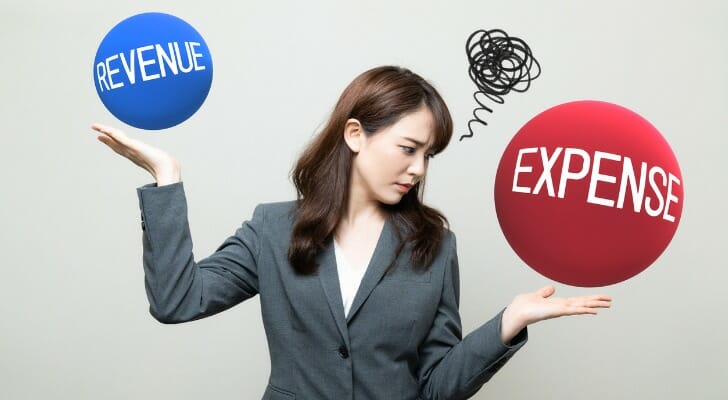The burn rate of a company is a measure of its negative cash flow in a set period of time, typically a month. Investors, especially venture capitalists, monitor this metric closely to gauge when the company will be self-sustaining or profitable. Business owners monitor this rate to see what, if any, adjustments need to be made to a company’s expenditures.
Do you have questions about evaluating investments? Speak with a financial advisor today.
Burn Rate: What It Is and How It’s Used
There are two types of burn rate: gross and net. The former is simply a measure of how much revenue a company is bringing in; the latter is its revenue minus expenditures (salaries, utilities, taxes, interest payments, etc.).
Burn rate is commonly used by entrepreneurs, seed stage investors and venture capitalists to assess a startup’s short-term performance. It helps money-losing companies and their backers understand how long the company’s cash on-hand is likely to hold out. And it suggests when and how to take steps to address the cash bleed. The figure, which is typically calculated monthly, is key in setting the budget of a business.
Burn rate isn’t only important for startups. It’s also useful for established companies during a crisis, such as the coronavirus pandemic, when revenue for hotels, airlines, restaurants, for example, dries up. At such times mangers may calculate their burn rate more frequently than monthly and consider ways to trim variable costs and discretionary expenses.
How to Calculate Burn Rate
Calculating burn rate requires four key numbers. Here’s a breakdown of each:
Revenue
This is the amount of money the company is bringing in each month from selling its products or services. In many early stage companies, this figure will be zero, because the company is still developing its offering and has not made any sales.
Operating Expenses
This is the most important figure, especially in the case of a company with no revenue. It is figured by adding up all the cash outlays the company makes every month. For example, this will include salaries, rent, utilities, supplies, software subscriptions and so on. If a company has no revenue, the operating expense figure is the same as the gross burn rate. The operating expenses may be averaged over several months or the most recent month may be used.
Another way to figure gross burn rate is to start with the cash on-hand figure at the beginning of the month or a period of several months. The cash on-hand figure for the end of the period is subtracted from this. The result is divided by the number of months in the period to produce the monthly gross burn rate.
Operating Profit
If a company has any revenue, the operating expenses can be subtracted from revenue to find its operating profit. In a typical startup, this figure will be a negative number. The operating profit figure is the same as the net burn rate. Net burn rate will be a smaller number than gross burn rate, since revenue is subtracted from the gross burn rate.
Cash on-Hand
The business’s cash on-hand consists of all its bank deposits, petty cash, negotiable securities and other liquid assets. It’s not strictly necessary to know cash on-hand to calculate burn rate. However, the main reason for calculating burn rate is to help entrepreneurs and investors understand how long in terms of months it will take for the company to run out of cash. To do this requires knowing how much cash the business has today.
Dividing cash on-hand by the burn rate gives the number of months before the business runs out of cash. This number is called the cash runway. As an example, if a company has $100,000 in cash and is spending $10,000 a month, its cash runway is 10 months. After that time, barring corrective action, the company will be out of business.
Managing Burn Rate
 Venture capitalists and business managers monitor burn rate and try to manage it so the company begins producing positive cash flow before it runs out of cash. The urgency – or lack thereof – for getting control of the burn rate reflects the strategy of a business. Wall Street paid close attention to Amazon’s burn rate during its early years.
Venture capitalists and business managers monitor burn rate and try to manage it so the company begins producing positive cash flow before it runs out of cash. The urgency – or lack thereof – for getting control of the burn rate reflects the strategy of a business. Wall Street paid close attention to Amazon’s burn rate during its early years.
There are three primary ways to manage burn rate, each of which we detail below:
Generate (More) Revenue
Businesses can increase sales by running promotions or offering discounts to spur purchases. They may also sell excess inventory or try to speed collections. A startup without market-ready products may begin selling consulting services or soliciting pre-payment for later delivery of finished goods, among other techniques. Companies can also raise cash by selling assets such as vehicles, equipment or real estate.
Reduce Costs
Startups can reduce costs and conserve cash by laying off employees, paying suppliers more slowly or moving to less costly quarters. Sometimes founders of companies that anticipate running out of cash will stop taking salaries or ask early employees to accept pay cuts in order to reduce burn rate. For established companies, one option is to reduce or eliminate dividends.
Raise Funds
Often the burn rate is used to time the next stage of fundraising. Many startups go through several phases of funding, with each new round of funding timed to avoid running out of cash or to allow an expansion, product development project or other activity that will bring the company closer to profitability. Just as more established companies use lines of credit and bank loans to get through cash flow crunches due business cycles or seasonality, startups may sell more equity to venture capitalists or take on new loans to investors to survive the early stages.
Bottom Line
 Burn rate is a key financial concept especially useful for managers and investors in startups as well as established entities. It is a measure of monthly cash outlays that helps company founders and backers evaluate a business’s ability to keep going until it reaches profitability and generates positive cash flow. There are two types of burn rate, gross and net. Having a net burn rate is not necessarily a bad thing, especially when a company is growing or when it arises from a temporary though severe crisis.
Burn rate is a key financial concept especially useful for managers and investors in startups as well as established entities. It is a measure of monthly cash outlays that helps company founders and backers evaluate a business’s ability to keep going until it reaches profitability and generates positive cash flow. There are two types of burn rate, gross and net. Having a net burn rate is not necessarily a bad thing, especially when a company is growing or when it arises from a temporary though severe crisis.
Tips for Investors
- A financial advisor can help you build an investment strategy for the future. Finding a financial advisor doesn’t have to be hard. SmartAsset’s free tool matches you with up to three vetted financial advisors who serve your area, and you can interview your advisor matches at no cost to decide which one is right for you. If you’re ready to find an advisor who can help you achieve your financial goals, get started now.
- Burn rate is only one factor that should go into making investment decisions. A free investment calculator can help you make sure you’ve got all the proverbial bases covered before you take a position on a security.
Photo credit: ©iStock.com/Szepy, ©iStock.com/metamorworks, ©iStock.com/sdecoret
